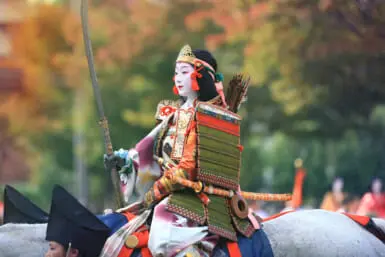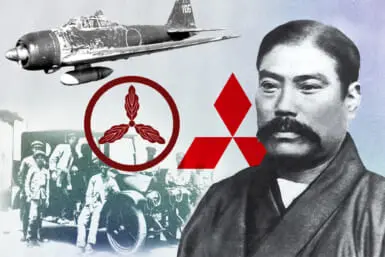by Yurie Horiguchi
Recently, an American friend asked me an interesting question. She wanted to know how, and under what conditions, demonstrations and protest rallies are held in Japan.
In America, she told me, the streets are emptied of uninvolved citizens when a protest rally is announced. There is a tremendous fear of wild shooting either from police or demonstrators, generally leaving innocent dead in the wake.
Here, she said, she had witnessed several demonstrations or rallies, seemingly conducted under the best of conditions, with police escorts in patrol cars, and no one getting out of line.
The chanting that goes on during those marches, she describes as “dirge-like,” and she wonders what they are chanting. It is difficult to say.
The placards that the demonstrators carry usually announce their aims and the name of the organization. But they are in Japanese. If it is any satisfaction. I must admit that the chanting is generally quite as unintelligible to the general public as it is to foreigners.
I found the question provocative and decided to put my private research division to work on an answer.
To stage a street demonstration in Tokyo, I learned, one must apply to the Tokyo Metropolitan Public Safety Commission for a permit. In the application, the purpose of the demonstration must be stated, and the route it will take (starting point and disbandment point) given, together with the name of the organizer or organizing body of the rally.
The Commission seldom refuses a permit, but the background of the applicant and the organization he claims to represent is carefully investigated.
If the group is one known to be inclined to violence, the Commission will call out the Mobile Police Corps, commonly referred to as the riot police.
These are the boys who look like Martians just landed from a space ship, with their helmets, duralumin shields and leg and arm protectors.
These Mobile Police live in barracks and are ready to answer a call at the drop of a hat. They are tough, most being experts in judo or karate or both—those gentle arts of self-defense.
They are unarmed. Their duralumin shields and their three-foot-long staves are considered to be sufficient arms for general purposes.
If they spot a demonstrator likely to become violent, the Mobile boys resort to what they call “sandwich tactics.” The protestor is approached from both sides, the shields of the riot police become the bread and the demonstrator the ham. The latter gets squashed.
If a demonstrator tries to buck, a shield is gently dropped on his foot. Although no bones are broken, it is difficult to continue demonstrating with a painful limp that lasts a couple of days.
Then there are water guns, not to be confused with your little son’s water-pistol. They don’t emit a sprinkle to make you uncomfortably drenched, but give forth with a blast that can knock a man down.
The reason the Mobile Police do not carry sidcarms is because if the situation gets really rough, a demonstrator might grab a gun. There is nothing more deadly than a firearm in the hands of someone who does not know how to use it correctly.
The riot police, who are mostly nice young men in everyday life, are organized in Tokyo into six groups. There is fierce competition among the groups—in sports, discipline and esprit de corps.
The Fourth Group has for long been considered as the toughest having been in the forefront of controlling the student riots in the ’60s. In fact mothers, some time back, used to scare their children by telling them that if they didn’t stop crying and behave themselves, the Fourth Group would come and get them.
Membership in the elite Mobile Police Corps is not restricted to men. There are 104 “Lady Mobiles” in Tokyo. They were originally recruited to frisk women demonstrators and look into public rest rooms (feminine) for suspicious characters.
The toughest “lady” holds a four dan black-belt rank in judo. Others are experts in wielding the halberd, and other such genteel past-times.
No Japanese private citizen may own a pistol. To be found in the possession of one is a punishable crime. They may, however, apply for permits for hunting shotguns. It involves a great deal of red tape which is one of the reasons why hunting is not too popular a sport in Japan.
One facetious researcher came up with the information that all Japanese rallies are sponsored by the Shoe Manufacturer’s Association. It is true that most demonstrators are prepared to walk for miles on end.
Another researcher supplied the information that bento (lunch-box) makers are behind the demonstrations. Organizers usually supply a free bento to their supporters.
Students in search of some extra pocket money are also known to be recruited for rallies. They get about ¥1,000 a day to swell the ranks.
In 1972, there were a reported 181,350 police officers in Japan. The Mobile Police Corps accounts for only 5.4 per cent of the total.
Traffic police account for 14 per cent, the Guard Division (the friendly cops in your neighborhood police box or on the beat) for 10.9 per cent, and 5.6 per cent are assigned to crime prevention and security. Others are administrators. detectives, training officers, etc.
Traffic police wear a white cover over their raps and a green arm-band with two white stripes. It is advisable not to tangle with them, especially if a demonstration is in sight. Some may be boys from the Mobile Corp in disguise. They are set up so as not to “provoke” demonstrators who dislike the looks of the men in armor.
Mobile Corps police are not professionals. They are ordinary cops who are assigned to the Corps for terms of service. When their stint is up they return to their original precincts.
Policemen are few in Japan in relation to the population. There is one for every 578 inhabitants.
In the United Kingdom there is one Bobbie to 555 citizens. In the United States, there is one for 543. In Spain the ratio is one to 423, and in West Germany, one to 400.
In the Land of Liberty, Equality and Fraternity, there is one French flic for every 316 citoyens.
But as both old residents and newcomers have surely noticed, the crime rate in Japan is very low compared to other advanced nations.
You can ride in subways trains at night without being mugged or raped, and you can go abroad after nightfall without having to leave your wallet and jewels locked up at home.
Glancing over local dailies of the past few weeks, it is noticeable that most brutal murders have been committed with kitchen knives or by strangulation.
Well, that’s not exactly the up-lifting note on which I wanted to end, but space runs short.








